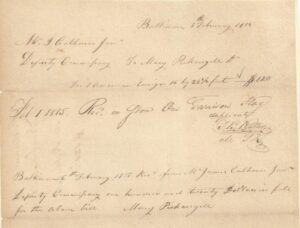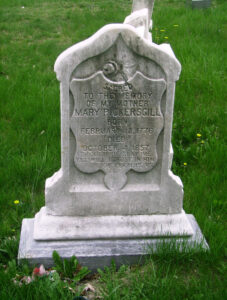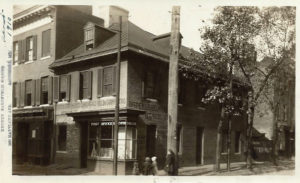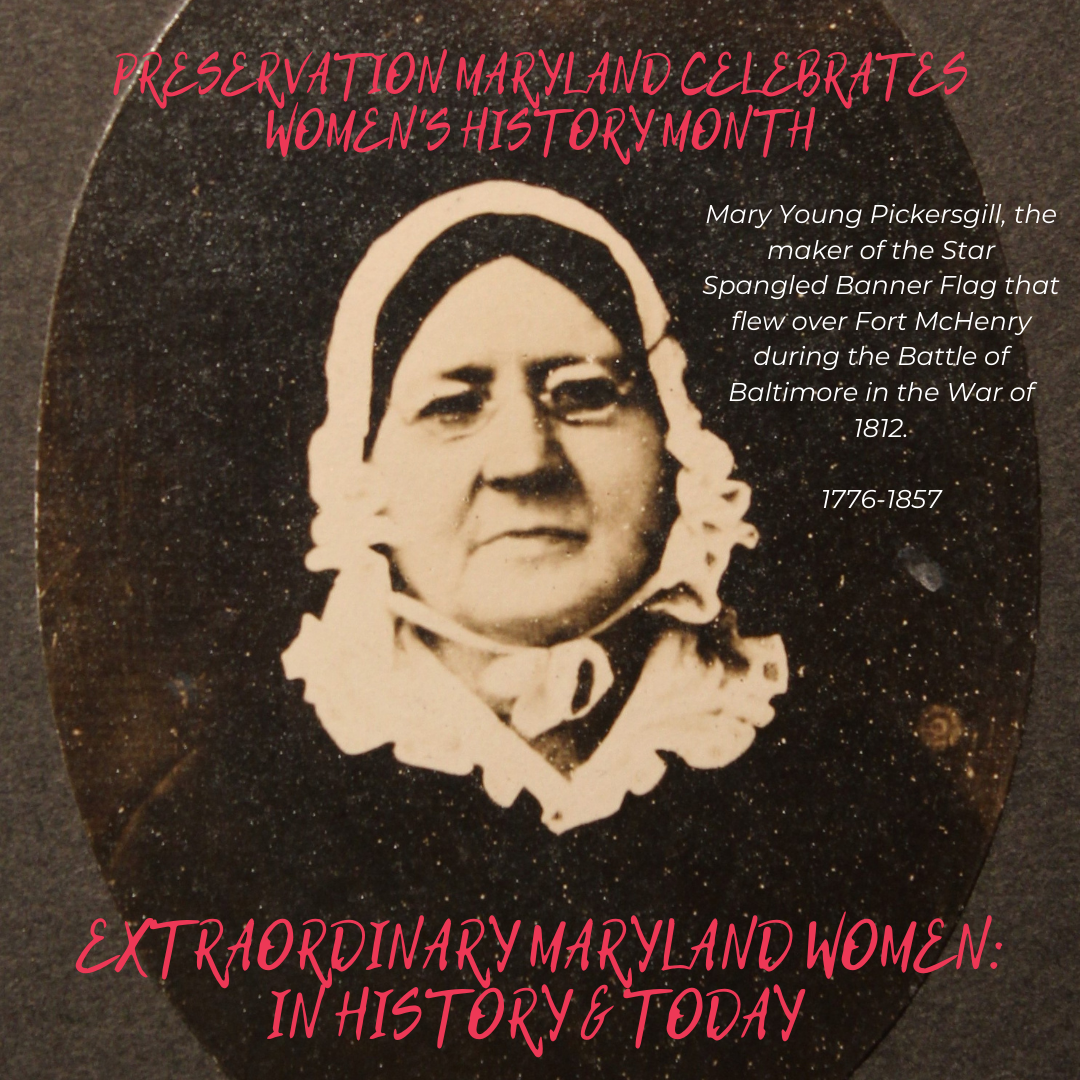Continuing with our Women’s History Month feature commemorating the vital role of women in American history, we bring you another inspiring story of a Maryland woman from our past: Mary Young Pickersgill. Today is also National Anthem Day, a perfect time to honor Mary and her contributions to Maryland history. Mary was a flag maker whose most famous commission was a 30’ x 42’ garrison flag that would go on to be raised over Fort McHenry on September 14, 1814, signaling the successful defense of the city against invasion and bombardment by the British Royal Navy and inspiring Francis Scott Key to pen the words that would become our National Anthem.

Receipt for the Star-Spangled Banner and Fort McHenry Storm Flag Signed for Mary Pickersgill by her niece Eliza Young, August 18, 1813 Commissioned by Mr. James Calhoun Jr., Deputy Commissary Collection of the Star-Spangled Banner Flag House
Born on February 12, 1776, in Philadelphia, Mary Young Pickersgill was a child of the American Revolution. As a result, the course of her life would be determined by the effects of the fight for American independence. The death of Mary’s father in 1778 would be the catalyst for the women of the Young-Pickersgill family entering into the military supply business. Like her mother, upon the death of her husband John Pickersgill in 1805, Mary turns to flag production to support her family in Baltimore. The family begins producing flags from within the now historic Flag House in 1807. Mary’s most famous commission is for two flags, a new 30’ x 42’ garrison flag and a smaller 17’ x 25’ storm flag for Fort McHenry.
The garrison flag would go on to be raised over the Fort on September 14, 1814, signaling the successful defense of the city against invasion and bombardment by the British Royal Navy and inspiring Francis Scott Key to pen the words that would become our National Anthem.
Around 1818, she began to devote her time to supporting Baltimore’s widows and orphans through her involvement with the Impartial Female Humane Society and would dedicate the remainder of her life to the organization. Founded around 1801 and incorporated in 1811, the Society was established for the purpose of employing and providing relief to widows and educating orphans. In 1828, Mary is elected president of the Female Humane Society and organizes successful campaigns to raise the wages of Baltimore’s seamstresses and fund the construction of an aged women’s asylum opened on October 28, 1851.
 On October 4, 1857, Mary Young Pickersgill dies at age 81. Her wake is held in the front parlor of the historic Flag House and she is later interred at Loudon Park Cemetery. The Annual Report of the Impartial Female Humane Society provides an unnamed obituary for one of its “oldest and most valuable managers,” likely Mary Pickersgill. The same indicates she was a founder of the Society, and that “by her wisdom and untiring zeal, sustained its nearly expiring efforts.”
On October 4, 1857, Mary Young Pickersgill dies at age 81. Her wake is held in the front parlor of the historic Flag House and she is later interred at Loudon Park Cemetery. The Annual Report of the Impartial Female Humane Society provides an unnamed obituary for one of its “oldest and most valuable managers,” likely Mary Pickersgill. The same indicates she was a founder of the Society, and that “by her wisdom and untiring zeal, sustained its nearly expiring efforts.”
A museum to honor Mary’s Legacy

The Flag House, ca. 1910.
Built in 1793, The Star-Spangled Banner Flag House, a National Historic Landmark at 844 E Pratt St, Baltimore, was once the home and business place of Mary, her mother, Rebecca Young – who began their flag-making business – and Mary’s daughter, Caroline. The house was sold to the city of Baltimore in 1927, and the Star-Spangled Banner Flag House Association established a museum inside the home. Today, the house retains much of its original character, showcasing many early 19th century objects that belonged to the Young-Pickersgill family.
Information and photos within this post provided by our friends at The Star-Spangled Banner Flag House.
RELATED:Women’s History Month: Maryland Women in History & Today: Anne St. Clair Wright

